Remembering the sad loss of a Sussex lifeboat crew
and live on Freeview channel 276
On November 15, 1928, the Sussex lifeboat Mary Stanford launched in heavy seas and a ferocious gale to answer a distress call from another ship.
The 17 man crew, including brothers, fathers and sons, never came back. All of them perished when the lifeboat capsized.
Advertisement
Hide AdAdvertisement
Hide AdIronically the crew of the ship they had gone to help had already been rescued by another vessel. Recall rockets had been fired to call the ill-fated lifeboat back, but the crew could not hear them above the wind.
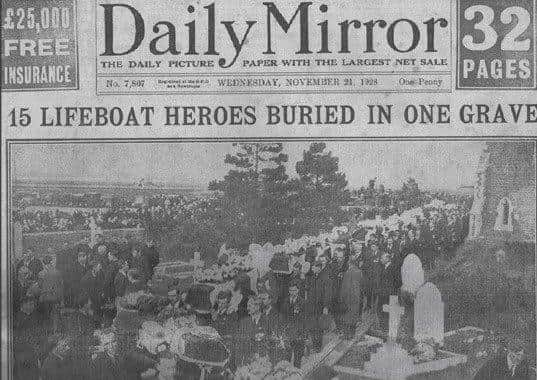

The loss of the crew devastated the close-knit village of Rye Harbour and caused shock waves across the country, making front-page headlines in many national newspapers. The fate of the Mary Stanford lifeboat remains the greatest single disaster in the history of the RNLI.
Of the 17 men lost, the body of the youngest, John Head, aged just 17, was never recovered. His father and brother were also on the boat. A memorial to the 17 lifeboat men stands in the grounds of the little parish church at Rye Harbour and each year a special memorial service is attended by the current Rye Harbour Lifeboat crew. It could not happen this year due to the coronavirus restrictions.
The Friends of the Mary Stanford Lifeboat are dedicated to preserving the memory of the crew and to restoring the original lifeboat station, which was left abandoned on the shoreline following the disaster.
Advertisement
Hide AdAdvertisement
Hide AdJacqueline Stanford, from The Friends, who by coincidence shares the same name as the lifeboat, takes up the story: “The Mary Stanford lifeboat was placed on service at Rye Harbour in 1916. She was a non-self-righting, 14 oar pulling and sailing Liverpool class surf boat chosen by the men for the conditions at Rye Harbour.
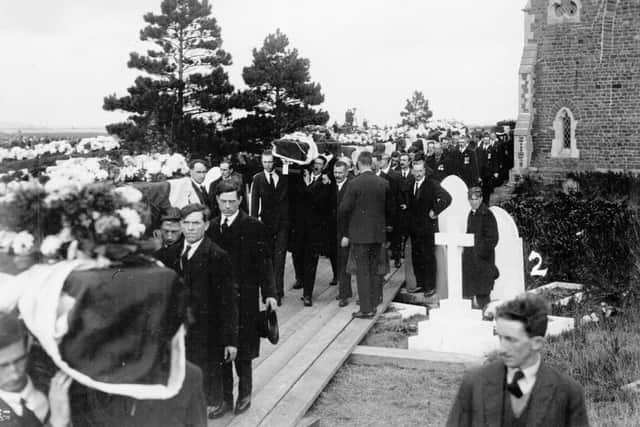

“On November 15, 1928, the Mary Stanford launched with her crew from Rye Harbour, into a south-westerly, force 10-11 gale with winds in excess of 80 miles per hour raging in the English Channel.
“The maroons were fired at 5am and the men ran in driving rain the 1.25 miles to the beach. After three attempts they got the Mary Stanford away into the heavy seas at 6.45am. The 17 men were making their way to rescue the crew from the Latvian vessel ‘Alice of Riga’ which had been involved in a collision with a large German Ship ‘Smyrna’, suffering the loss of her rudder and a hole torn in her side, eight miles south west of Dungeness.
“However, at 6.50am, Rye Coastguard received a message saying that the crew from the ‘Alice of Riga’ had been rescued by the ‘Smyrna’ a nearby ship.
Advertisement
Hide AdAdvertisement
Hide AdFrantic efforts were made to recall the lifeboat all to no avail. With the blinding spray and driving rain coupled with all of the action going on in the lifeboat, keeping her head to sea with the oars while the mast and sails were raised, the crew did not see the recall signal.
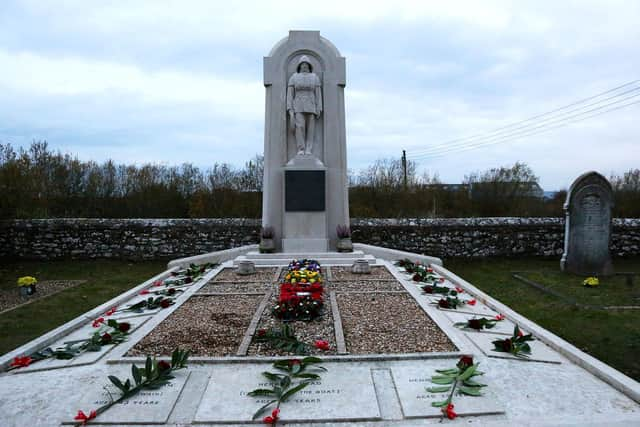

“At approximately 9am the mate of the S.S. Halton saw the lifeboat 3 miles W.S.W from Dungeness and all appeared okay. The lifeboat was also seen by a boy sailor on the Smyrna a little later. Then at about 10.30am a young lad, Cecil Marchant, collecting driftwood at Camber looked out to sea and in a bright shaft of sunlight saw the lifeboat capsize.
“He ran home and told his parents what he had seen, and his father reported it to Jurys Gap Coastguard.
“Soon rumours were going around Rye Harbour village that the boat had ‘gone over’, families ran to the shore with the vicar and prayed for the lives of the crew. By midday, the Mary Stanford could be seen bottom up floating towards the shore, and over the next two hours 15 bodies washed ashore, including two in the upturned lifeboat.
Advertisement
Hide AdAdvertisement
Hide AdThe Army doctor and soldiers were summoned from Lydd to help and no effort was spared in trying to revive the crewmen, but all died. Three months later the sea gave up the body of Henry Cutting, which washed ashore at Eastbourne, but the body of the youngest crewman John Head, aged 17, has never been found.
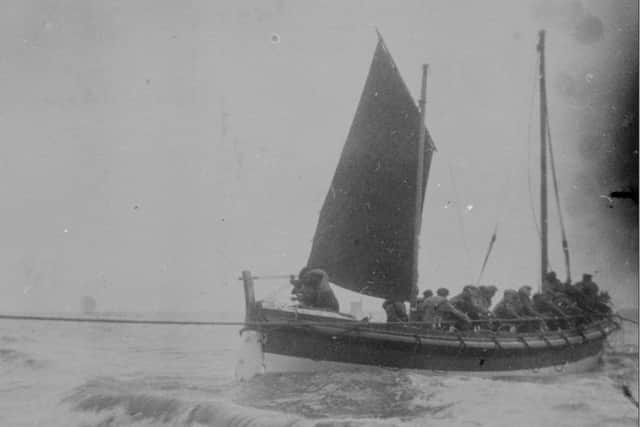

“The impact of the disaster on the Rye Harbour community was devastating and deeply affected all who lived there. The disaster was also felt worldwide.
“The bodies of the 15 crew were laid in state in the Sailors Institute and Tom Pope, who was eight when he lost three brothers in the tragedy, was to recall being taken along with the other children to pay their respects to the crewmen.
“One of the other children would have been William Stonham who years later was to recall that he was the only child to wake up as his father was preparing to leave after hearing the maroon calling the lifeboat crew on duty.
Advertisement
Hide AdAdvertisement
Hide Ad“He sat at the top of the stairs and watched his father struggling into his coat. He said to Joseph, ‘Here Dad, take my torch’. Joseph replied, ‘It’s alright, I won’t need it. I won’t be long’.”
“The funeral was attended by thousands including the Latvian Minister Fridricke Vesmans with his laurel wreath bound with the Latvian colours.
“Black storm clouds gathered as the 15 flag-draped flower-laden coffins were carried from the Mission Hall to the church by 120 pull bearers from the RNLI, the Hastings lifeboat crew wearing their red woollen caps, and British Legion to the strains of ‘Lead kindly light’.
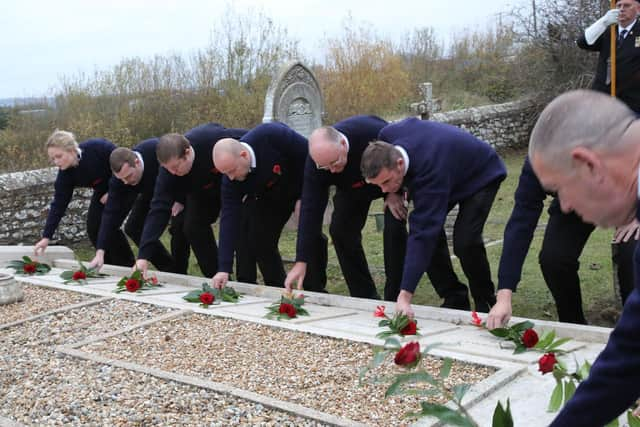

“The church was filled with the flowers that had been sent from all over the country whilst the service took place in the churchyard with the 15 friends laid to rest sharing one communal grave as they had the Mary Stanford lifeboat.
Advertisement
Hide AdAdvertisement
Hide Ad“The weather held as they were gently lowered, and laurel leaves and chrysanthemums were scattered. One newspaper correspondent was to report ‘To no Prince or Emperor has more sincere homage been paid than that today to the memory of these simple hardworking fisherfolk who died on an errand of mercy to save others’.
“Three months later when the sea gave up Henry Cutting’s body, he was also laid to rest with his friends and crewmates.
“A tablet of black marble and Manx stone was given by the people of the Isle of Man and placed inside the church. Funds were collected and three years later the memorial designed by James Wedgwood was unveiled by Lord Blanesburgh during a service of dedication attended by thousands once again.
“As for the Mary Stanford Lifeboat House, the Friends achieved Grade II listing, we have our project design for the restoration, and our restoration builders in place thanks to our wonderful civil engineer for Canterbury Cathedral Brian Morton who loved the building and gave us so much of his time for free before his death.
Advertisement
Hide AdAdvertisement
Hide Ad“We will raise the £100,000 to restore it, and there will eventually be a permanent Museum to tell the story of these heroes of Rye Harbour.”